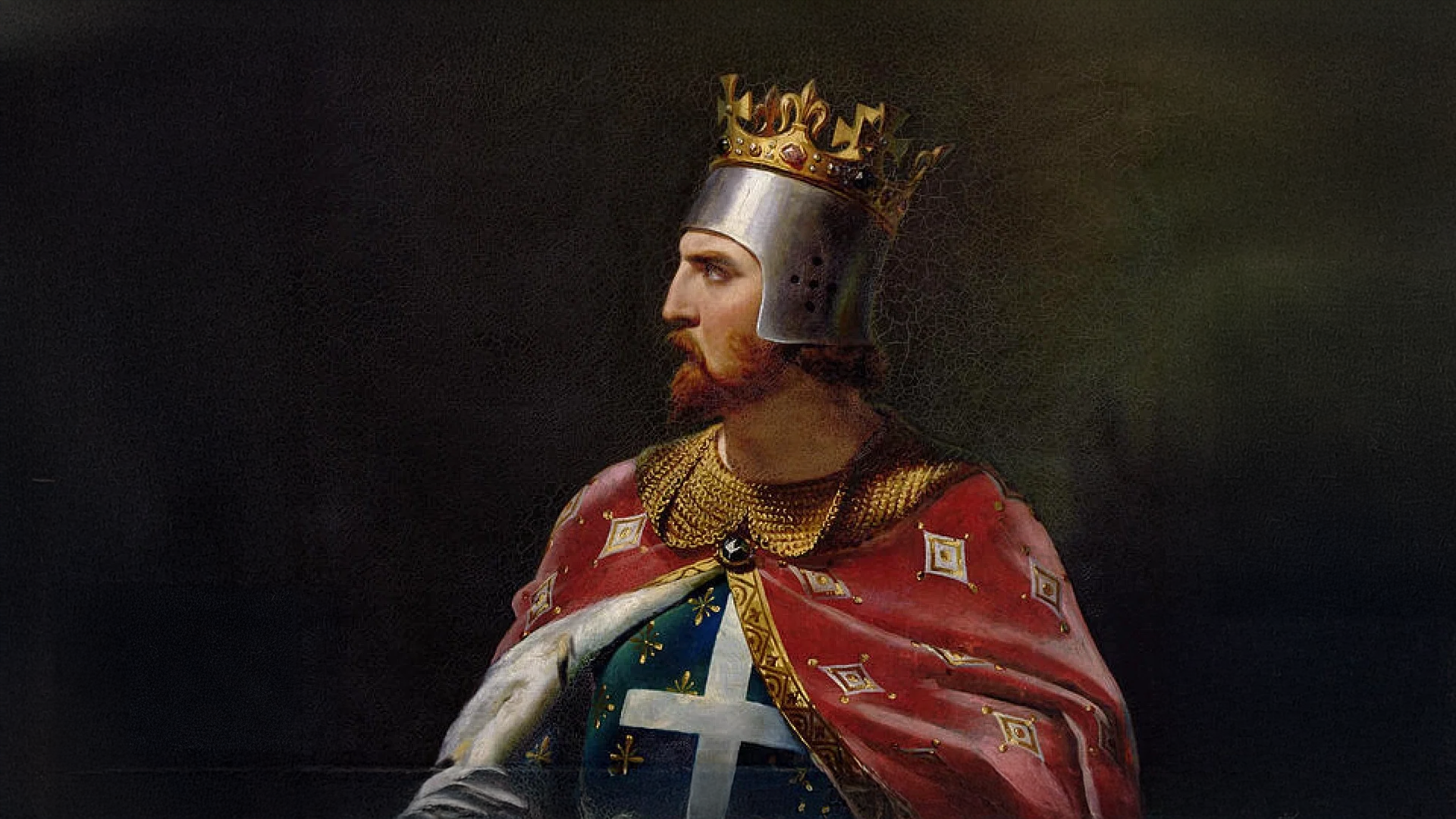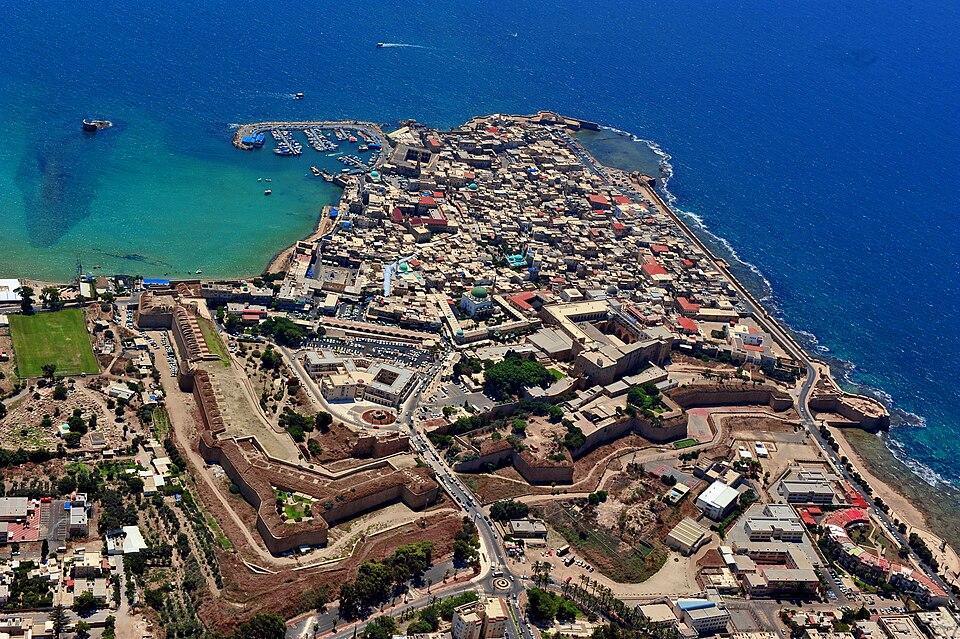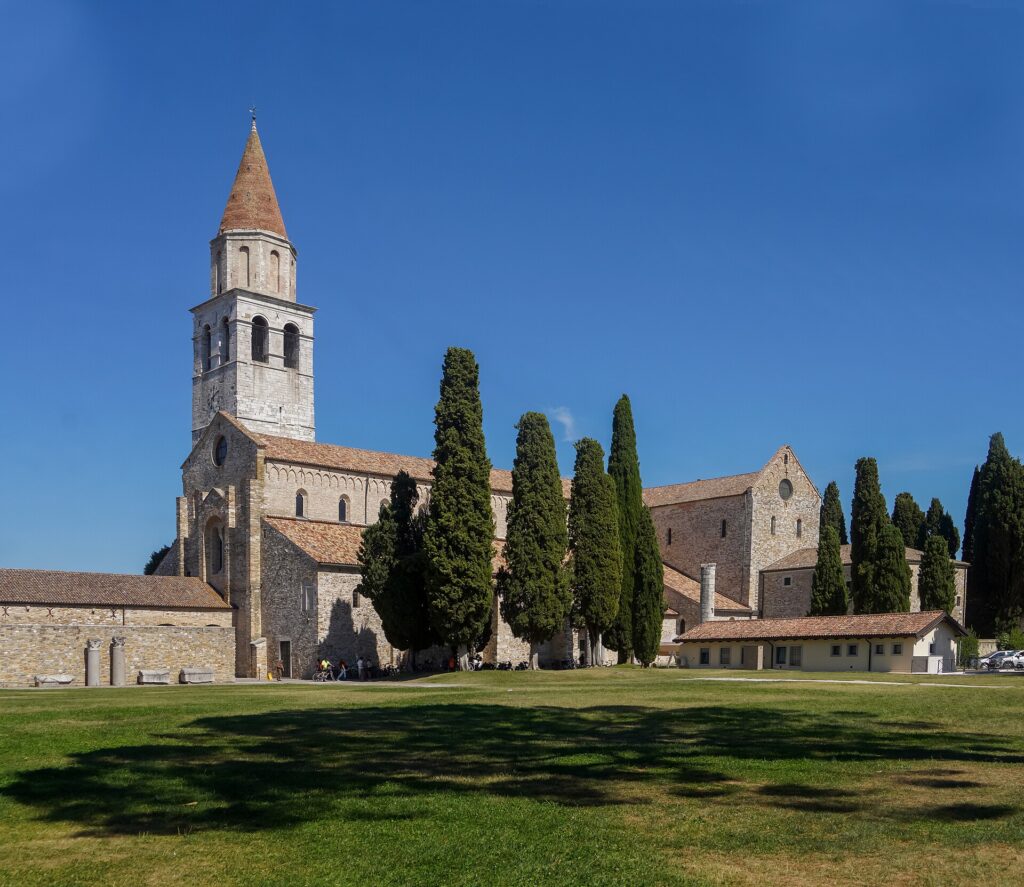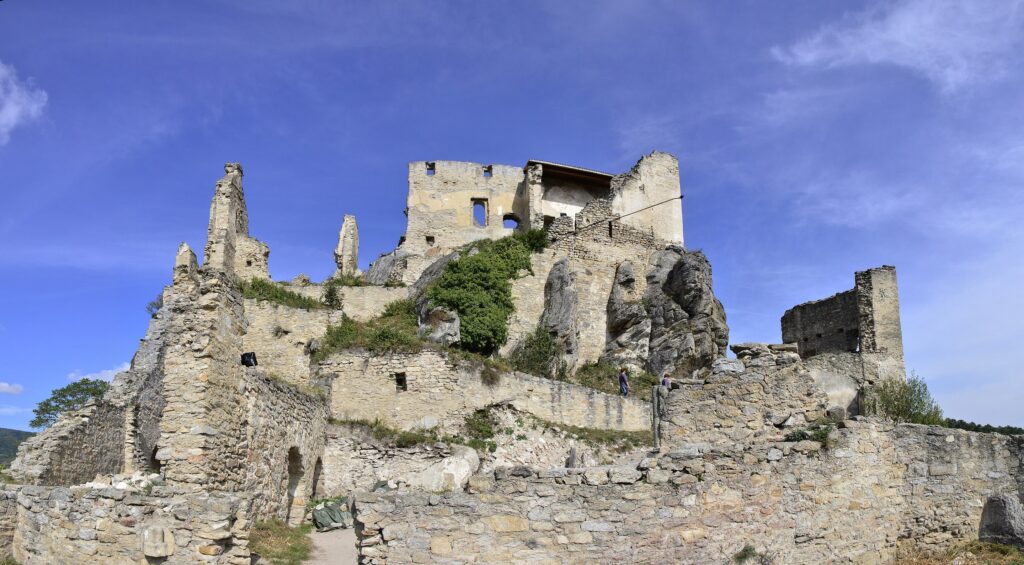
They say history is written by the victors but sometimes, it’s way more fun to follow the losers, the captives, and the royals who just couldn’t catch a break. Let’s follow Richard the Lionheart.
Richard I didn’t just ride home like a victorious king. He got shipwrecked in the Adriatic, tried to sneak through enemy territory in disguise, and ended up imprisoned by the Holy Roman Emperor. For months. While his poor mother raised a king’s ransom to get him out. It’s part thriller, part comedy of errors—and somehow still manages to be one of the most legendary journeys in medieval history.
So what would this look like as a vacation? Because if I’m going to spend weeks down a historical rabbit hole, someone should get a trip out of it. So grab your metaphorical sword because we’re retracing the Lionheart’s long, weird road back home.
The Story
The dust at Acre clung to everything; the stone, the skin, the soul. It hung in the folds of the tents, settled into the cracks of leather boots, and crusted the hems of a thousand cloaks. And somewhere amid the clamor of merchants, the clanging of armor, the endless churning murmur of men and sea and fire, Richard stood beneath the sun like a lion sick of his own legend. The banners above him fluttered with all the hollow glory of a campaign gone to rot—victory taken at too great a cost, triumph dulled by exhaustion and the slow, creeping doubt that perhaps this was not what God had wanted after all.
For months, the desert had stolen from them water, will, men by the hundreds, and the enemy was no longer just Saladin and his armies, but also the heat, the distance, the grinding sense that Europe was waiting with its squabbles and betrayals and unwashed hands of his brother itching for the crown in his absence. Acre had fallen, yes. It had fallen hard and red and screaming. But the Holy City still stood defiant and unclaimed, and with it, the ghosts of every crusader dream that had ever turned to dust beneath Jerusalem’s sky.
So, on the 9th of October, 1192, Richard turned toward home….or at least the idea of it. But the road was no simple thing, not for a king who had insulted too many princes, owed too many debts, and made too many boasts with his sword. He would not return in triumph through arches of roses. He would steal his way back through Europe like a ghost in borrowed clothes, haunted by the weight of gold and chains and the lingering echo of a war half-won and half-lost.
He left Acre not with ceremony, but with the quiet urgency of a man who knew the world behind him was closing its fist. The sea stretched out before him like a wound half-healed, and he cut across it not as a king returning from victory, but as a fugitive with too many crowns and not enough friends. His fleet—what was left of it—turned toward Cyprus, the sails full of winter wind and whispered prayers.
In Limassol, the streets still remembered the fire of his earlier arrival, when he’d stormed ashore in fury and claimed the island like a man taking back a birthright he’d never wanted. Now it was only a rest, a brief breath between tempests. The harbors swayed with masts and murmurs, and Richard watched the horizon, knowing it would not forgive him his pride. He moved again, onward toward Corfu—where the hills sloped into a sea that glittered deceptively, masking the storms to come.
And then, a wreck. A brutal, shuddering end to the king’s quiet escape. Somewhere near the ancient Roman town of Aquileia, the waters heaved and the gulls turned against him. The ship was thrown to the mercy of jagged coasts and strangers’ eyes. No more banners. No more knights. Just the broken boards of royal ambition and the soaked cloak of a man who once ruled half the known world and now trudged, shivering, toward the cold edges of empire.
He tried to slip through Austria like a silhouette, cloaked and silent, but kings cast long shadows. In Vienna, the mask came off. A tavern whisper, a flash of coin, a face remembered—who knows what gave him away. But the door slammed shut behind him, and the iron was fastened around his wrists with the deliberateness of old revenge. Leopold of Austria had not forgotten the insults, nor the blood spilled beneath Acre’s walls. Richard the Lionheart, scourge of Saracens and song of England, was now a prisoner—ransom meat for emperors, bargaining chip for old grudges.
The Trip

Itinerary of our trip following Richard the Lionheart’s fateful journey home from the Holy Land—tracing his route through Cyprus, Corfu, and a shipwreck in Aquileia, before his capture in Austria.
Let’s break down the stops of Richard the Lionheart and see if we can’t extract a more peaceful route and get some pleasant R&R. In this itinerary, we’re tracing the path he took on his chaotic journey home from the Crusades—starting in the sun-soaked port of Acre and winding through Cyprus, Greece, and Italy, before everything goes spectacularly sideways in Austria. Whether you’re a history buff, an adventure lover, or just here for the medieval drama, this route has it all. Let’s dive into each stop and explore what made this journey one for the history books.
Acre (Akko), Israel – 2 Days
After spending nearly two years in the Holy Land, Richard the Lionheart finally departed Acre in 1192, exhausted from endless battles and fragile truces. The Crusade had reached its uneasy conclusion, and with tensions flaring back home in England, Richard set his course west—unknowingly beginning one of the most perilous journeys of his life. His first step? Leaving the ancient coastal city of Acre, a place that had seen both brutal sieges and triumphant processions.
A small town in northern Israel with a population of about 50,000 people, Acre was once home to a mighty fortress held by the Knight’s Hospitaller. Now a laid-back seaside village, Acre has been a very important city for over 4,000 years. But today it’s a popular destination and launching-off point for visitors wanting to see the northwest part of Israel—just like pilgrims arriving to visit the Holy Land back in the 12th century of Richard’s time. The easiest way to get to Acre is by flying into Tel Aviv and journeying on a 1 hour and 15 minute train ride north into Akko Station. Once off the train, venture inside the walls of the old city (a UNESCO World Heritage Site). There are plenty of decent hotels to stay in within the walls and most of the historical sightseeing will take place inside the walls.

Plan to spend at least two full days in Acre. Start your visit at the Hospitaller Fortress, also known as the Knights’ Halls, a massive underground complex where Crusader knights lived, trained, and likely complained about the heat. Don’t miss the Templar Tunnel, a secret escape route leading from the fortress to the port—because every good medieval story needs a secret passage. Walk along the city walls, still standing strong against time and sea spray, and wander the Turkish Bazaar where spice merchants now work in what was once a Crusader market. For a more reflective moment, visit the Al-Jazzar Mosque, a beautiful example of Ottoman architecture that now stands where Crusader churches once loomed. And of course, no trip to Acre is complete without watching the sunset from the harbor, just as Richard and his army may have done before setting sail on their fateful voyage home.
Limassol, Cyprus – 2 Days
From the fortified walls of Acre, it’s time to cross the Mediterranean and follow Richard’s trail to the island of Cyprus, specifically, the coastal city of Limassol. In 1191, Richard arrived here not for a vacation, but to conquer the island after its ruler, Isaac Komnenos, made the mistake of disrespecting the wrong Crusader. Richard captured Limassol, married his wife Berengaria here (who became Queen of England without ever setting foot in it), and turned the island into a strategic Crusader stronghold. Richard would stop here again on his ill-fated journey home after the Third Crusade—passing through Cyprus a second time before everything went sideways in Europe. Today, luckily, things are far more relaxed.

There’s no direct ferry from Acre to Limassol for tourists (thanks, modern geopolitics), so your best bet is to take the train or taxi back to Tel Aviv and catch a short flight to Larnaca or Paphos—both under 1.5 hours—and then drive or shuttle about an hour into Limassol. It’s a bit of a roundabout journey, but one Richard himself might have appreciated after being shipwrecked nearby.
Spend two or three days in Limassol, soaking in the history and the sun. Start at Limassol Castle, where Richard and Berengaria were likely married. The modern version is Ottoman-era, but the site itself is deeply tied to their story. The Cyprus Medieval Museum, located inside the castle, offers rich context for Crusader-era Cyprus. Then let yourself relax a little—Richard might not have, but you deserve it. Stroll the Limassol Marina, enjoy the cafes and sea views, or take a side trip to Kourion, an ancient Greco-Roman city just west of town with stunning ruins and a breathtaking cliffside amphitheater.
For accommodations, stick close to the Old Town or the Marina area for easy access to both history and creature comforts. Boutique hotels and well-reviewed Airbnbs range from $120–$400 per night. Think of it as your Crusader rest stop…with cocktails.
Corfu, Greece – 1-2 Days
After leaving the shores of Cyprus behind for the second time, Richard continued his journey west across the Ionian Sea. His next known stop was the island of Corfu, nestled off the northwest coast of Greece. By this point, his goal was clear…get home to England, preferably without sparking any more wars. But the fates (and a few ambitious rulers) had other plans. Richard’s fleet was scattered by storms, and his passage became increasingly dangerous the farther west he sailed. Corfu served as a brief but strategic stop, a place to regroup and resupply before entering even trickier waters, both literal and political.
Getting to Corfu from Limassol takes a bit of modern travel magic. You’ll likely want to fly from Larnaca or Paphos to Athens, then catch a quick regional flight to Corfu International Airport—the whole trip should take about 4–6 hours total, depending on layovers. Once there, the island offers a perfect blend of medieval ambiance and Mediterranean bliss.

Spend a night or two in Corfu Old Town, another UNESCO World Heritage Site that practically oozes history. While there’s no Richard-the-Lionheart plaque waiting for you, the Old and New Fortresses offer an ideal setting to imagine the kind of place his fleet might have paused, towering stone ramparts, views over the harbor, and centuries of intrigue in the air. You can also explore Liston Promenade, dine al fresco in Spianada Square, or head slightly inland for a visit to Achilleion Palace, once home to Empress Elisabeth of Austria (not Crusader-era, but fit for royalty all the same).
Lodging in Corfu ranges from quaint guesthouses tucked into narrow stone alleys to more luxurious seaside resorts. For this journey, we recommend staying near the Old Town, where prices hover around $100–$300 a night. It’s the perfect place to picture Richard’s war-weary fleet bobbing just beyond the city walls—sails slack, decks crowded with sunburnt soldiers and weary knights. The sea stretches out like a promise and a threat, each wave lapping against the hulls a reminder that their long journey was far from over. One brewing storm could scatter them to the winds and alter the course of history.
Aquileia, Italy – 1 Day
After leaving Corfu, Richard’s voyage took a dangerous turn. A violent storm scattered his fleet, and Richard, still desperate to make his way back to England, was forced to give up on traveling by sea. He made landfall near Aquileia, a port city on the Adriatic coast of what is now northern Italy. From there, he began a difficult journey overland through central Europe that would eventually lead to his capture. By this point, he was traveling with only a few companions, in disguise, and fully aware that danger could be waiting around any corner.

Aquileia today is a quiet Italian town with deep Roman roots and a UNESCO World Heritage designation. Once one of the most important cities of the ancient world, it was a key center of trade and military movement, making it a fitting stop for a king on the run. To reach Aquileia from Corfu, take a short flight to Venice, often with a connection in Athens, then catch a regional train to Cervignano-Aquileia-Grado Station. From there, it is a quick taxi ride into the center of town.
While visiting, be sure to explore the impressive Basilica of Aquileia, known for its fourth-century mosaic floors and haunting crypts. The Roman Forum ruins nearby still hold the echoes of ancient travelers and power struggles. For accommodations, look into local agriturismos (farm stays) or small countryside inns around Aquileia. Rooms typically range from $90 to $200 per night depending on the season and amenities. Although Richard had no time to rest, you can enjoy a peaceful evening surrounded by vineyards and quiet fields—a calm pause in a place where history once turned sharply.
Vienna, Austria – 2-3 Days
After slipping through Italy and the Alps in the bitter cold of winter, Richard arrived in Vienna in late 1192. He was exhausted, under-resourced, and still traveling in secret—disguised as a common traveler and staying clear of major roads. But it wasn’t enough. Word had spread of his escape, and Duke Leopold of Austria, still furious over a long-standing feud with Richard, had spies watching. Richard was recognized, arrested near Erdberg, and held for ransom in Dürnstein Castle—setting into motion one of the most expensive hostage stories in medieval history.

Today, Vienna is an entirely different kind of royal experience. It’s a grand, glittering city full of palaces, opera houses, and enough cake to bankrupt a sugar empire. Fly here from Venice or take a scenic train (about 7–8 hours) through the Alps—it’s a beautiful ride and totally doable for the modern traveler with less urgency than a fugitive king.
For a stay that blends history and comfort, book a room near the Innere Stadt (Old Town), where hotels average between $150 and $350 per night. You’ll be close to landmarks like St. Stephen’s Cathedral, the Hofburg Palace, and the Imperial Treasury—fitting for the conclusion of this royal itinerary. While here, take a trip to the Dürnstein Castle ruins along the Danube to stand where our poor king Richard was imprisoned. It’s about an hour outside the city and worth it for history lovers and rabbit-hole chasers alike.
Following in the footsteps of Richard the Lionheart isn’t just about castles and cathedrals—it’s about stepping into the chaos, courage, and sheer absurdity of real history. From the Crusader strongholds of Acre to the glittering halls of Vienna, this itinerary weaves together war, weather, betrayal, and survival into a path that’s as winding as the rabbit holes that inspired it. Whether you’re here for the history, the travel tips, or just the excuse to dive headfirst into a medieval manhunt, this journey proves one thing: even when you’re king, getting home isn’t easy.